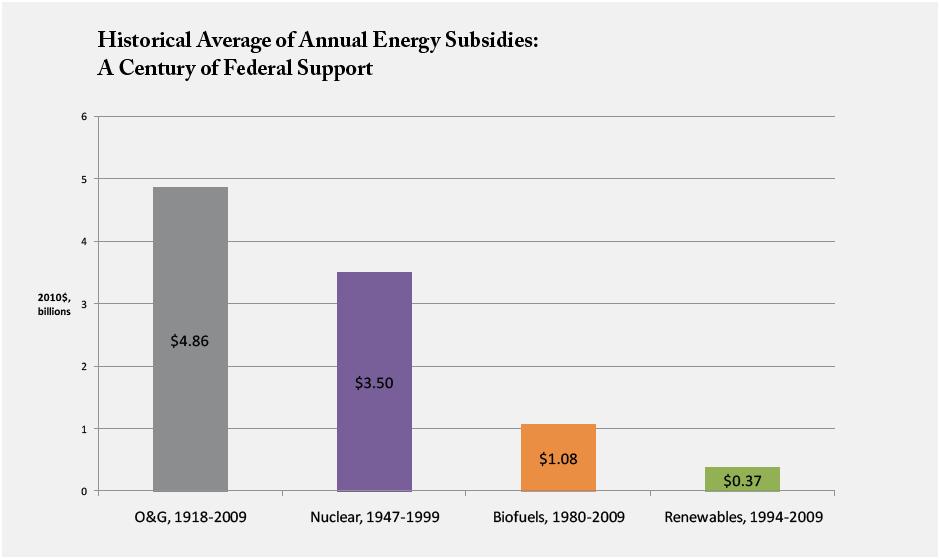
The Legacy of Subsidizing Fossil Fuels
by Alexandra KlassOften lost in today’s debates over whether to continue tax benefits for renewable energy is a historical perspective on the significant support the federal government has provided and continues to provide the fossil fuel industry. Tax benefits for the energy industry as a whole totaled over $20 billion in 2011, which is, and historically has been, about 2% of total U.S. tax expenditures. In general, the United States has used tax benefits to first support development of domestic fossil fuel and nuclear production for nearly a century and, more recently, to support the development of domestic renewable energy. Until 2005, virtually all energy-related tax expenditures and benefits went toward stimulating domestic oil and gas production with the amount claimed by renewable energy almost negligible.
In recent years, tax benefits for renewable energy have surpassed that of fossil fuel production. For instance, in 2011, the breakdown of tax expenditures and other tax-related benefits within the energy sector was as follows: 68% to renewable energy (including ethanol and biodiesel), 15% to fossil fuels, 10% to energy efficiency programs, 4% to nuclear energy, and 2% to other. These numbers can be misleading, however, because they do not take into account the decades of continued tax benefits the federal government provided to the fossil fuel sector, which helped those industries become the dominant economic and political forces they are today. For instance, one study shows that over the period of years the federal government has supported the oil and gas industry, the average annual subsidy for that industry sector was nearly $5 billion; for nuclear, the average annual subsidy was $3.5 billion; for biofuels, the average annual subsidy was just over $1 million; and for other renewables, the average annual subsidy was $0.37 billion.


Charts from Pfund and Healey, DBL Investors
Moreover, this discrepancy is evident even when one considers only the past decade as opposed to the many decades of support for fossil fuel development. Taking into account both tax benefits and subsides, fossil fuels received $72 billion from 2002-2008, while tax benefits and subsidies for renewable fuels totaled far less, at $29 billion, with almost half of that amount going to ethanol production rather than renewable electricity sources. Thus, while the percentage of tax benefits associated with renewable energy today exceeds tax benefits associated with fossil fuel development, it is important to consider the breakdown of tax benefits by industry over the entire history of such benefits to answer critical questions about “what it takes” to support a desirable energy sector and how long that support should continue.
Consideration of that history argues strongly in favor of continued government support for the renewable energy industry through tax benefits, research and development funding, and other forms of support. Indeed, the main reason it has been difficult for renewable energy to compete with fossil fuels is because the billions of dollars of government support for those traditional industries have made them so strong, powerful, and wealthy that it is virtually impossible for newcomers, like renewable energy, to compete. The government played a major role in creating that strength and it should now play a major role in creating a more level playing field for renewable energy in order to meet current policy goals of reducing GHG emissions and expanding our available energy sources.
© 2014 The Center for Progressive Reform